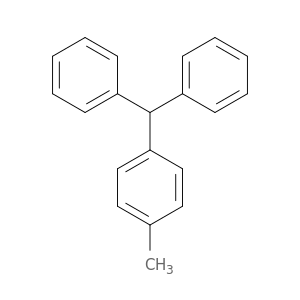
1-(Diphenylmethyl)-4-methylbenzene
| Title | Journal |
|---|---|
| Concise site-specific synthesis of DTPA-peptide conjugates: application to imaging probes for the chemokine receptor CXCR4. | Bioorganic & medicinal chemistry 20110515 |
| Protective effect of stem bark of Ceiba pentandra linn. against paracetamol-induced hepatotoxicity in rats. | Pharmacognosy research 20100101 |
| Membrane-anchored HIV-1 N-heptad repeat peptides are highly potent cell fusion inhibitors via an altered mode of action. | PLoS pathogens 20090701 |
| The influence of invasive growth pattern and microvessel density on prognosis in colorectal cancer and colorectal liver metastases. | British journal of cancer 20070410 |
| Solid support post-conjugation of amino acids and a phenanthroline derivative to a central position in peptide nucleic acids. | Nucleosides, nucleotides & nucleic acids 20070101 |
| Orthogonally protected cyclo-beta-tetrapeptides as solid-supported scaffolds for the synthesis of glycoclusters. | The Journal of organic chemistry 20060303 |